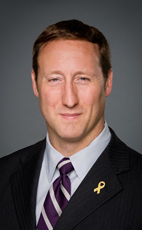Mr. Chair, I would be pleased to do so, and I want to begin by thanking the member for Glengarry—Prescott—Russell for his service as a member of Parliament and for his service in uniform. He is one of a number of members of this House who have provided that service to the Canadian Forces.
The Canada first defence strategy has been referred to a number of times this evening already. This very much includes a plan to acquire a new family of combat vehicles and systems. Last summer, we announced plans to produce the next generation of land combat vehicles. In part, this will include the current fleet of LAV IIIs that will be upgraded. We, in fact, have three new fleets of combat vehicles to be acquired: close combat, or CCVs, tactical armoured patrol vehicles, or TAPVs, and the force mobility enhancement, or FME, vehicles.
One of the lessons we have seen in Afghanistan is that this type of vehicle, these highly protective combat vehicles, are so important to ensure that our troops are able to have the right mix of equipment to patrol in these very volatile, very dangerous areas. We have seen the effects, the sad impact IEDs have had on human lives throughout Afghanistan. One of the proud things we are doing, in addition to equipping our soldiers, is a lot of demining, something that Canada is well known for around the world.
We continue to ensure that we have the proper equipment and the proper mix. We continue to invest to ensure that we have the proper protective gear for our men and women in uniform. Certainly light armoured vehicles, the LAV IIIs, have been one of the workhorses in the fleet. The close combat vehicles and the new tactical patrol vehicles, as well, will form part of that fleet, as will the force mobility enhancement project. All of those are well under way. All of those we will be delivering in the future for the Canadian armed forces.

